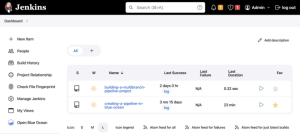Predicting wildfires is a tricky business. A new artificial intelligence model could help fire agencies allocate resources to mitigate wildfire risks across the West.
In recent years, wildfires have scorched the western US leading to loss of human life and billions of dollars in damages. Of western wildfires recorded between 1950 and 2017, more than 60% occurred after 2000, according to NASA data. Not only are these fires becoming more frequent, they are also increasing in scale.
“Megafires,” as they are known, are wildfires that burn more than 100,000 acres. For comparison, the 2018 California Camp Fire wildfire blazed more than 153,000 acres. Before 1970, there were no documented megafires in the US.
Climate change is certainly playing a major role in this sudden surge in wildfire activity. Rising temperatures enable the fire season to begin much earlier in the year and last longer than in previous decades. To help, researchers at Stanford are using deep-learning to predict wildfires before they start.
Gauging wildfire risk
Current methods to measure dryness of vegetation in various locations is a painstakingly arduous process. First, teams are dispatched to forage branches in a given area and weigh the material. Next, they use an oven to bake the vegetation to remove moisture and then reweigh the plant material. The moisture content lost during the baking process accounts for the difference between these two weights. This determines a metric known as “live fuel moisture content” to help gauge an area’s wildfire risk.
Branch by branch and area by area, the US Forest Service collects this information and stores this data in the National Fuel Moisture Database. This database includes hundreds of thousands of measurements recorded over the last half-century.
SEE: Managing AI and ML in the enterprise 2020: Tech leaders increase project development and implementation (TechRepublic Premium)
Harnessing artificial intelligence
A recurrent neural network exists at the center of the new approach to assist fire agencies around the US. This specific AI is designed to sift through large amounts of data to pinpoint patterns. The National Fuel Moisture Database information was used to train the system. Next, the team applied additional satellite observation to estimate fuel moisture levels.
“One of our big breakthroughs was to look at a newer set of satellites that are using much longer wavelengths, which allows the observations to be sensitive to water much deeper into the forest canopy and be directly representative of the fuel moisture content,” said Alexandra Konings, a Stanford University ecohydrologist and senior author of the paper.
The researchers trained the model using three years worth of data related to the 239 sites located across the western US. Then the researchers looked at the system’s predicted fuel moisture levels across a range of common land covers including shrublands, grasslands, broadleaf deciduous forests, and others. These predictions were compared to the National Fuel Moisture Database field measurements to gauge the system’s accuracy.
SEE: Managing AI and ML in the enterprise 2020: Tech leaders increase project development and implementation (TechRepublic Premium)
Overall, fuel moisture was most accurately predicted for shrublands. Shrublands exists as the largest ecosystem in the West accounting for nearly half (45%) of the land cover in the region. These ecosystems regrow very quickly and are exceptionally vulnerable to regular wildfires. As a result, an enhanced understanding of these ecosystems is key to decreasing wildfire risks.
Currently, the interactive map exists as a historical look at the fuel moisture content. However, the researchers hope these models could be used to pinpoint future high-risk areas and assist fire agencies with deploying fire mitigation efforts. In the years ahead, this information can be used to pinpoint areas where prescribed burns could be used to lower wildfire risks, according to one member of the research team.
“Creating these maps was the first step in understanding how this new fuel moisture data might affect fire risk and predictions,” Konings said. “Now we’re trying to really pin down the best ways to use it for improved fire prediction.”
Also see

IMAGE: iStock/xp33gt
Source of Article




